Abstract
Over 2,000 cases of imported malaria have been confirmed by blood examination. Ninety percent. of cases from tropical Africa were infected with P. falciparum. Most of the patients were Caucasians and had primary infections. All developed fever within a month after arrival and most of them within two weeks of arrival. In some patients malaria parasites were seen in routine blood films.
Developing forms of P. falciparum were always present in the peripheral blood of patients suffering from a primary attack which was not diagnosed or treated until a week or more after the onset of fever.
All deaths investigated were caused by P. falciparum and were primary infections.
In not one of the P. falciparum infections did the victim continue taking prophylactic drugs for more than a few days after leaving the endemic area. Had drugs been continued for one month probably not a single overt case of P. falciparum would have occurred.
A primary attack of P. falciparum malaria is seldom, if ever, classical in that the fever is never tertian and may resemble clinically many other diseases.
Children in boarding-schools returning from the tropics should be supplied with prophylactic tablets and instructions to the matron. If there is an epidemic of a fever any students who have recently returned from the tropics should have a blood film examined for malaria.
The risk of contracting malaria among drug addicts is considerable, especially with P. falciparum.
Full text
PDF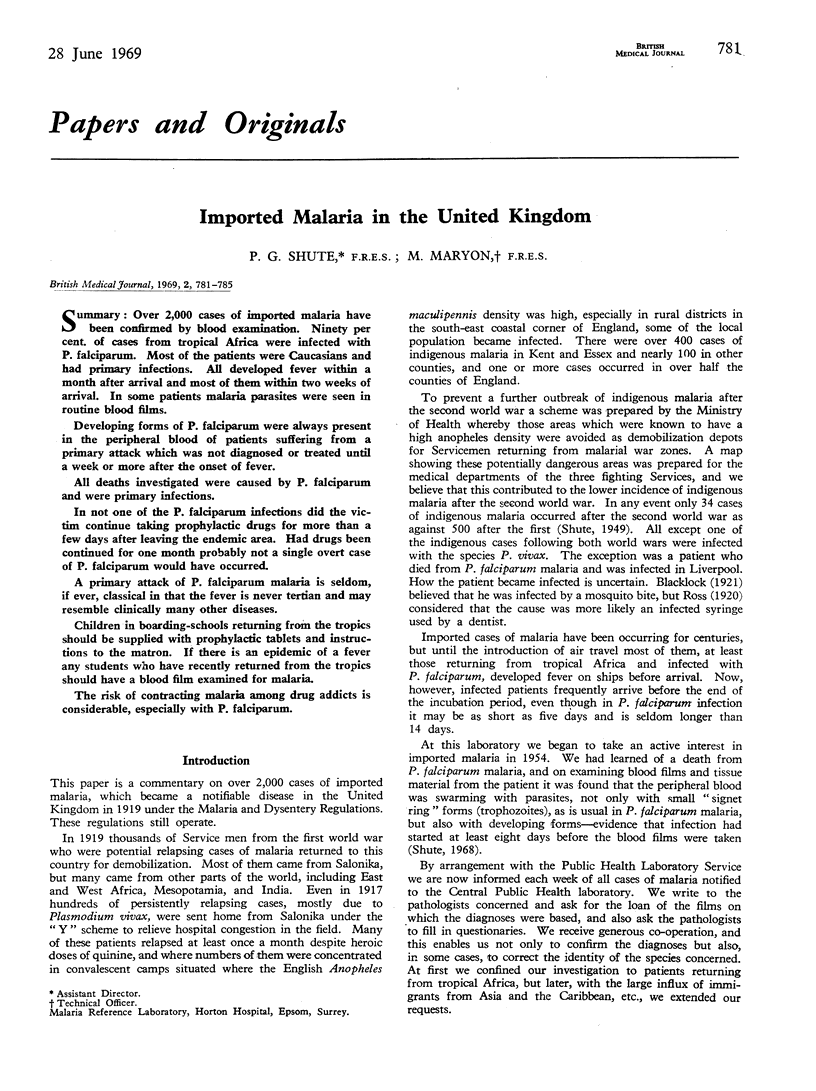
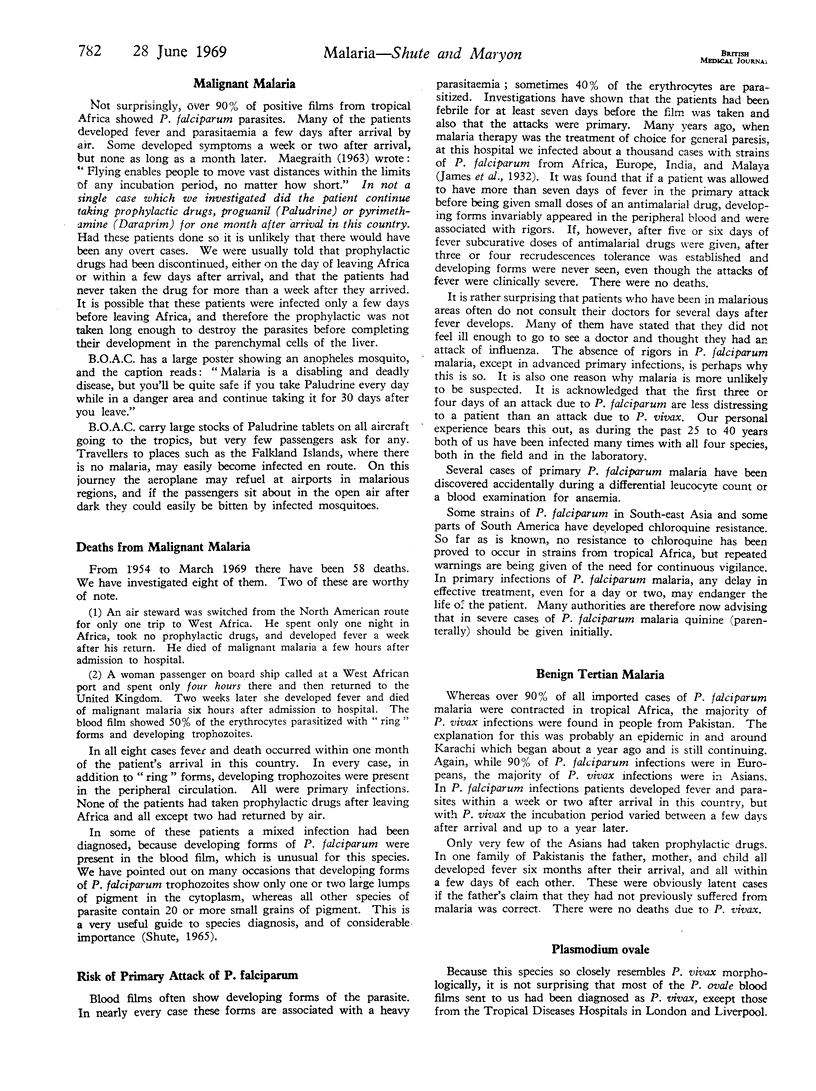
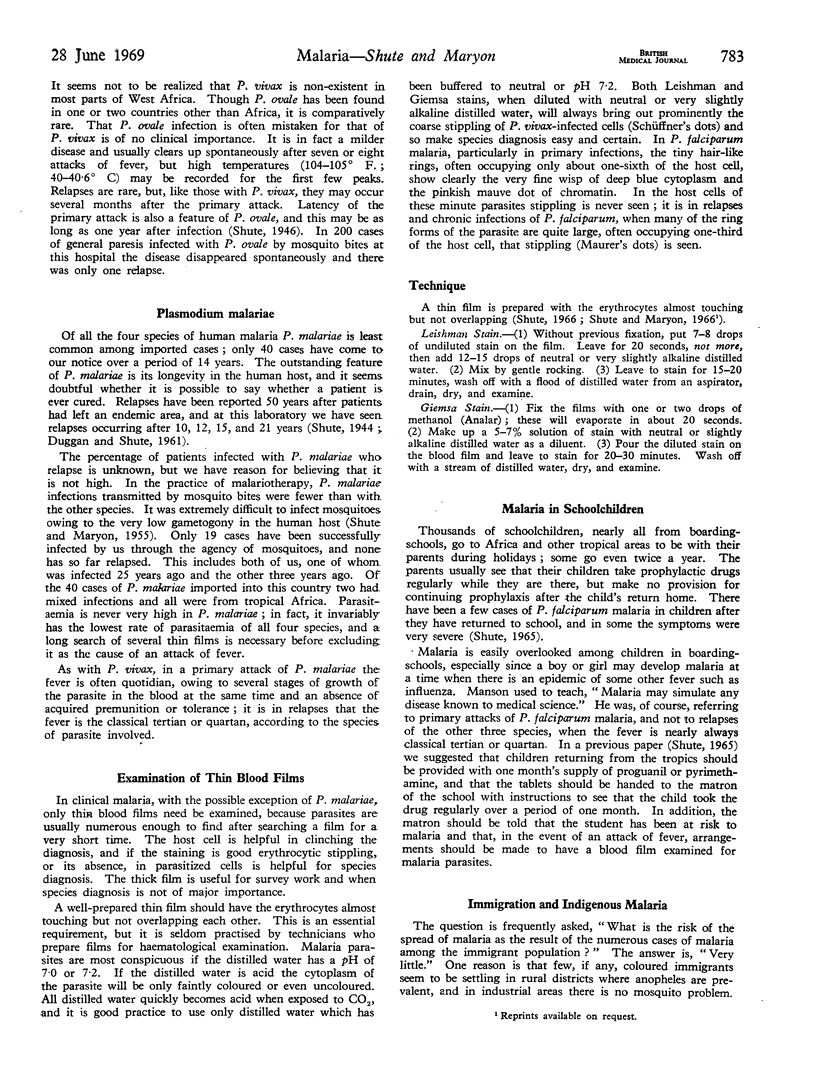
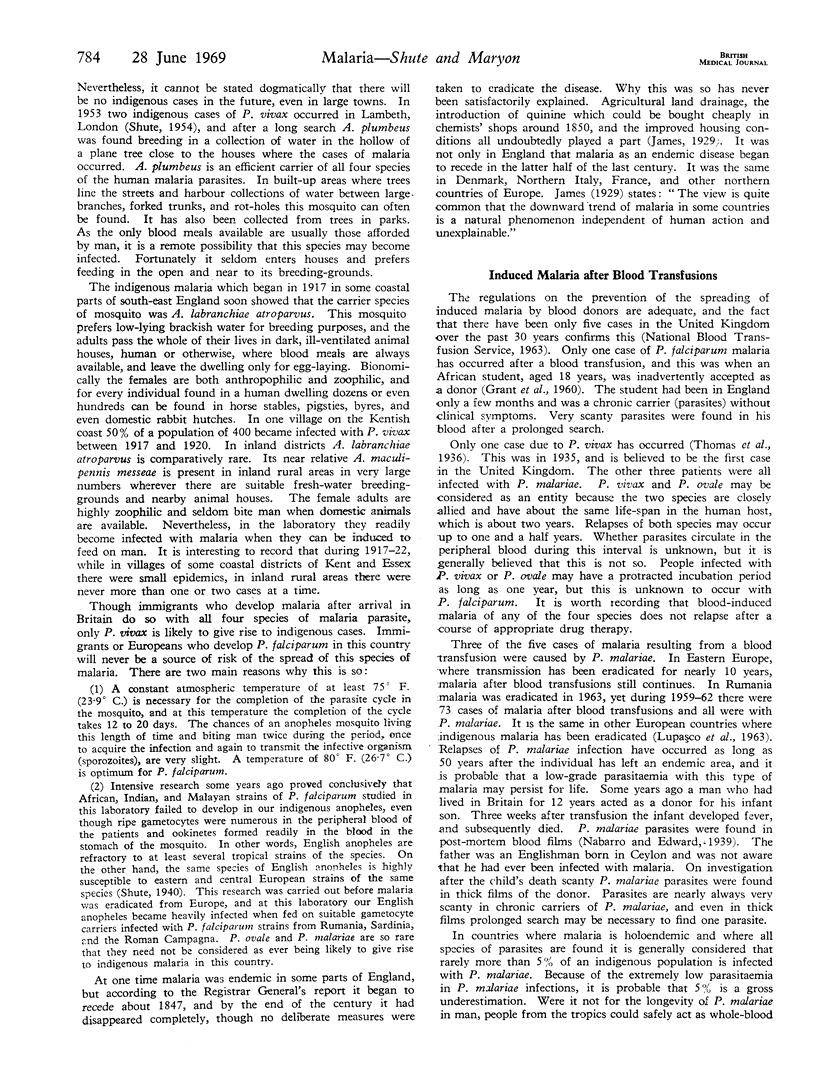
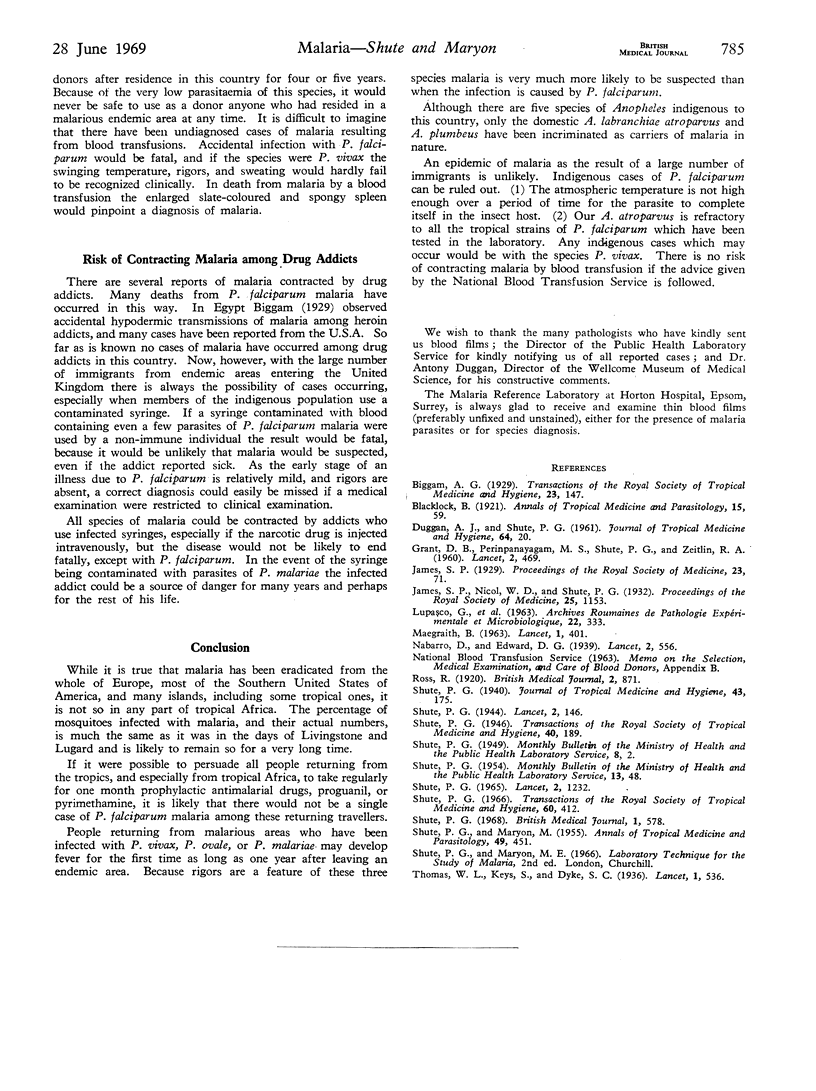
Selected References
These references are in PubMed. This may not be the complete list of references from this article.
- DUGGAN A. J., SHUTE P. G. Quartan malaria relapsing after thireteen years. J Trop Med Hyg. 1961 Jan;64:20–21. [PubMed] [Google Scholar]
- GRANT D. B., PERINPANAYAGAM M. S., SHUTE P. G., ZEITLIN R. A. A case of malignant tertian (Plasmodium falciparum) malaria after blood-transfusion. Lancet. 1960 Aug 27;2(7148):469–470. doi: 10.1016/s0140-6736(60)91598-1. [DOI] [PubMed] [Google Scholar]
- SHUTE P. G. Indigenous P. vivax malaria in London believed to have been transmitted by Anopheles plumbeus. Mon Bull Minist Health Public Health Lab Serv. 1954 Mar;13:48–51. [PubMed] [Google Scholar]
- SHUTE P. G., MARYON M. Transmission of Plasmodium malariae by laboratory-bred Anopheles maculipennis var. atroparvus Meigen. Ann Trop Med Parasitol. 1955 Dec;49(4):451–454. [PubMed] [Google Scholar]
- Shute P. G. Malaria in Britain. Br Med J. 1968 Mar 2;1(5591):578–579. doi: 10.1136/bmj.1.5591.578-c. [DOI] [PMC free article] [PubMed] [Google Scholar]
- Shute P. G. Some observations on malaria in children returning from holidays in the tropics. Lancet. 1965 Dec 11;2(7424):1232–1234. doi: 10.1016/s0140-6736(65)90654-9. [DOI] [PubMed] [Google Scholar]
- Shute P. G. The staining of malaria parasites. Trans R Soc Trop Med Hyg. 1966;60(3):412–416. doi: 10.1016/0035-9203(66)90311-7. [DOI] [PubMed] [Google Scholar]


